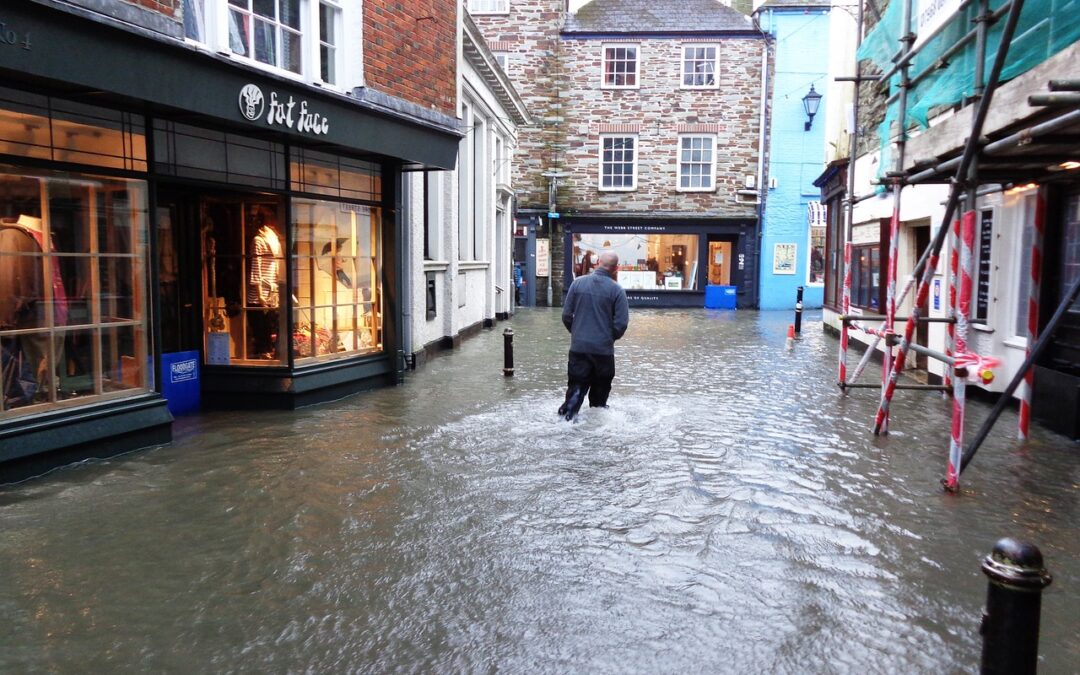Water damage can occur suddenly, often catching homeowners off guard. Whether it’s a burst pipe, a roof leak, or a natural disaster, taking immediate action is crucial to mitigate the damage and prevent further complications. We will discuss what you should do immediately after water damage occurs in your home. These steps are paramount for safeguarding your property, ensuring your safety, and beginning the water damage restoration process.
Steps to take immediately after water damage
1. Ensure Safety First:
Before addressing any water damage, prioritize safety. Ensure that you and your family are out of harm’s way, especially if the water damage implicates electrical hazards. Turn off the electricity supply to the affected area to prevent electrical shock. If the water damage is extensive, and you suspect structural instability or compromised foundations, avoid entering the affected area until a professional has deemed it safe. Safety should always come first when dealing with water damage.
2. Stop the Source of Water:
Identifying and stopping the water source is critical in stemming further damage. If the water damage is due to a burst pipe or plumbing issue, shut off the water supply to your home or the area where the leak occurs. If it’s a roof leak, immediately shield the damaged area with a tarp or plastic sheeting to stem further water infiltration. Stopping the water source can halt the ongoing damage and lessen the extent of the problem.
3. Document the Damage:
After ensuring safety and addressing the water source, start documenting the damage. Take photographs and videos of the affected areas, ensuring to capture the damage’s extent and any valuable items that have been affected. This documentation will be useful for insurance claims and for assessing the severity of the damage. Create a comprehensive inventory of damaged items, enclosing their approximate value and relevant purchase receipts or appraisals. This information will be valuable when dealing with insurance adjusters.
4. Contact Your Insurance Company:
Once you have documented the damage, contact your insurance company immediately to report the incident. Be prepared to furnish details about the cause of the damage, the extent of the impacted zones, and any relevant documentation you’ve collected. Your insurance company will usher you through the claims process and provide instructions on proceeding. Act quickly when dealing with insurance claims is paramount, as many policies have specific timeframes for reporting incidents and filing claims.
5. Remove Excess Water:
After addressing safety concerns, stopping the water source, and documenting the damage, your next step is removing excess water. Depending on the severity of the water damage, you may need to use buckets, towels, mops, or wet-dry vacuums to extract standing water. The goal is to stem further saturation of building materials like drywall, flooring, and insulation, which can lead to structural damage and mold growth. Promptly removing excess water is critical in minimizing these risks.
6. Promote Air Circulation:
Improving air circulation in the affected areas is essential for drying and reducing humidity levels. Open windows and doors to increase ventilation. Use fans and dehumidifiers to aid in the drying process. Ensuring proper ventilation helps prevent mold growth and lessens the time for the affected areas to dry out. Mold can begin to develop within 24-48 hours after water damage, so ventilation is paramount in the early stages.
7. Salvage Valuable Items:
If you have valuable items at risk of further damage, take steps to salvage them. Vacate wet items from the affected area and place them in a dry, safe location. Depending on the item, you may need to accomplish specialized drying techniques or consult with restoration professionals. Items such as documents, photographs, and electronics should be prioritized for salvage efforts, as they can deteriorate rapidly when exposed to water.
8. Elevate Furniture and Belongings:
Raise furniture and belongings off the wet floor to prevent further damage. Use blocks, foam, or other materials to elevate items above the water level. This step is especially important for wooden furniture, which can absorb moisture and become warped or damaged. Remove rugs and other floor coverings to allow the underlying flooring to dry more efficiently.
9. Contact Water Damage Restoration Professionals:
In many cases of significant water damage, contacting water damage restoration professionals is advisable. These experts have the knowledge, experience, and equipment to assess the damage accurately and implement effective restoration procedures. Water damage restoration professionals can help with structural drying, mold prevention, and repairing or substituting damaged building materials. They can also guide how to navigate the restoration process, including any necessary permits or inspections.
10. Begin the Cleanup Process:
Cleaning up after water damage is critical to stem mold growth and ensure a safe living environment. This process implicates yanking damaged materials, disinfecting surfaces, and thoroughly drying the affected areas. It’s paramount to follow proper cleaning and disinfection procedures to eliminate any potential contaminants the water may have introduced. Utilize appropriate cleaning agents and protective gear when handling potentially contaminated materials.
Dealing with water damage can be a stressful and challenging experience, but taking immediate action is crucial to mitigate the impact and prevent further complications. By ensuring safety, stopping the water source, documenting the damage, contacting your insurance company, removing excess water, promoting air circulation, salvaging valuable items, and following proper cleanup procedures, you can navigate the aftermath of water damage more effectively. Additionally, seeking assistance from water damage restoration professionals such as Sarkinen Restoration in Vancouver when needed and implementing future prevention measures will help safeguard your property from potential water-related incidents.

Recent Comments